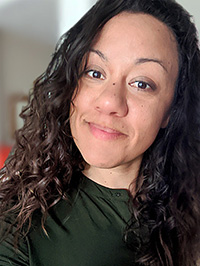How do you develop an effective behavior management plan?
Page 5: Procedures
 In addition to creating rules, effective teachers develop procedures—the steps required for the successful and appropriate completion of a number of daily routines and activities. Procedures are particularly important for routines and activities that are less structured and during which disruptive behavior is more likely to occur (e.g., morning arrival, dismissal).
In addition to creating rules, effective teachers develop procedures—the steps required for the successful and appropriate completion of a number of daily routines and activities. Procedures are particularly important for routines and activities that are less structured and during which disruptive behavior is more likely to occur (e.g., morning arrival, dismissal).
Developing Procedures
Rule number one: Keep it simple. Teachers should develop easy-to-follow procedures for only those routines and activities for which it is necessary. Excessive or cumbersome procedures can be confusing and counterproductive. To help determine whether a procedure is warranted, teachers can consider the questions in the table below.
| Why | is this procedure needed? |
| Where | is this procedure needed? |
| What | is the procedure? are the steps for successful completion of the procedure? |
| Who | needs to be taught this procedure? will teach this procedure? |
| When | is this procedure needed? will the procedure be taught? will the procedure be practiced? |
| How | will you recognize procedure compliance? |
Following are some common elementary routines or activities that might benefit from procedures. Click on the links below to view sample steps for each.
For Your Information
As you might expect, different teachers and grade levels will have different classroom procedures. Additionally, the way in which the procedures are written and the need for visual cues may vary. Regardless, these should be realistic and age-appropriate. Primary students benefit from brief statements and visual supports. Intermediate students typically need only a list of written procedures.
Morning arrival
Procedure:
- Greet teacher and classmates
- Hang up backpack and coat in your area
- Place homework folder in desk and book to read on desk
- Get breakfast and quietly read while eating
- When breakfast ends, gather trash to put in bin
Morning meeting
Procedure:
- Eyes are watching
- Ears are listening
- Hands in lap
- Legs are crossed
Dismissal
Procedure:
- Clean up area around your desk
- Grab coat and backpack
- Teacher will call on row (or group) that is packed up, silent, and ready to line up first
- Walkers and car riders exit through hallway A
- Bus riders exit through hallway B
Walking in the hallway
Procedure:
- Eyes forward
- Hands to self
- Voices silent
- Feet walking
Turning in Assignments
Procedure:
- Double check for name at the top
- Pass assignment forward
- Student at front of the row collects assignments and hands to teacher
Restroom use
Procedure:
- Raised hand with fingers crossed
- Wait for teacher to nod yes
- Take bathroom pass
- Walk to the restroom quickly and quietly
- Wash hands
- Return to class and begin working again quietly
Throwing away trash/recycling
Procedure:
- Make a pile on your desk
- Wait for the trash helper to come around
- Gently put your pile into the trash can
Asking for help
Procedure:
- Silently raise hand
- Wait patiently for teacher
- If teacher is busy, try working on the next question or problem
Getting/Returning Laptops
Procedure:
- Quietly stand and walk to the cart
- Gently unplug/plug in your laptop
- Hold it with two hands
- Walk back to your seat
Lining up
Procedure:
- Facing forward
- Silent mouths
- Hands to yourself
Going to lunch
Procedure:
- When called, get your packed lunch, and get in line
- Walk down the halls quietly, keeping feet and hands to self
- Enter cafeteria and if getting lunch get in line
- Once served, sit at your assigned table
- Remain seated until signaled to clean up
- Throw away trash on way to lining up by exit door
Sharpening Pencil
Procedure:
- Silently hold up one finger
- Wait for your teacher to nod yes
- Walk to the pencil sharpener and sharpen pencil
- Return silently to your desk
Fire and disaster drills
Procedure:
- Stop what you are doing
- Voices off, ears listening
- Quickly and quietly line up at the door
Tip
For best results, write each procedure in the form of a numeric list indicating the correct sequence of steps.
It’s important to remember that although certain procedures might work in some classrooms, they may need to be changed or modified in others. It’s completely normal (and recommended) to adapt a procedure to best meet your needs and the needs of your students.
Listen as Andrew Kwok discusses developing procedures that are culturally responsive or sustaining.

Andrew Kwok, PhD
Assistant Professor, Department of Teaching, Learning, and Culture
Texas A&M University
(time: 2:52)
Transcript: Andrew Kwok, PhD
The main goal for procedures is ways to expedite regular processes within the classroom and being able to maximize the time students have to learn and to engage. I think that requires student input not for all procedures, but for certain ones that are particularly difficult or challenging or may just benefit from having other perspectives in order to solidify some of these classroom procedures. The one that really stuck out to me is the idea of tardies or absences because it’s going to happen within the classroom and teachers need to really consider what that may mean for student learning. Oftentimes, teachers just outright penalize students for coming late to the classroom. But I think it’s different when you start considering the student and the root of that challenging action. Maybe their parents are working multiple jobs and getting them to school in time isn’t a possibility, or there’s just some lag in terms of the priority of being right on time. And so being able to work with that student and work with the family to share your view of punctuality but also being flexible and saying, “Well, I understand you just can’t come on time because you’re getting off of a night shift.” Is there a way to not penalize the student? Can we spend additional time after school? Can we spend time during lunch in order to make up for the missed learning or the curriculum that is occurring? I don’t think students should be penalized for things that are definitely out of their control. And so the more the teacher can work with them in order to solidify things and understand the background of what’s happening will allow for structures within the classroom to be more culturally responsive.
In general, being culturally responsive towards aspects of classroom management really comes down to understanding the root of these behaviors or potentially misbehaviors. To you, it may be a misbehavior, but the more that the teacher can dig in and understand why things are happening, that can allow for changes to happen within the classroom that are more responsive to those students. So part of it is an individual consideration, but it can be a cultural difference that is occurring that certain groups of students are acting a certain way. And so it’s up to the teacher to understand why, as opposed to forcing those students to learn or to engage in the way that only the teacher wants. And so the more that they can find out the why of things happening, the better they will be at being able to manage the classroom.
For Your Information
Throughout the school day there are many transitions, both big (moving from class to class) and small (ending math and starting science). Unplanned or unsuccessful transitions can lead to disruptive behaviors and lost instructional time. Much as when they develop procedures for routines and activities, teachers should provide clear, consistent steps for transitions. Below are some possible steps and examples to help successfully prepare students to transition to the next routine or activity.
transition
glossary
| Transition Steps | Example |
|
“I need all eyes on me in 5 – 4 – 3 – 2 – 1.” (Hand raised in air, counting down) |
|
“In one minute, we will go to lunch.” |
|
“When I say ‘start,’ I need everyone to close your notebooks, put everything in your desk, push in your chair, and line up at the door.” |
|
“Shelby, will you please repeat my directions?” |
|
“Start.” |
|
“Thank you to my students who were silent as they lined up. Unfortunately, a few students were talking. I also see that a few chairs are not pushed in. Please go back to your desks. Let’s try lining up again.” |
 The Center on Positive Behavioral Interventions & Supports (PBIS) has developed a guide that recommends teachers use student specific transition signals (e.g., use of home language, call-and-response, song lyrics). This practice ensures that all students’ cultures, lives, and home languages are reflected in the classroom each day.
The Center on Positive Behavioral Interventions & Supports (PBIS) has developed a guide that recommends teachers use student specific transition signals (e.g., use of home language, call-and-response, song lyrics). This practice ensures that all students’ cultures, lives, and home languages are reflected in the classroom each day.
PBIS Cultural Responsiveness Field Guide: Resources for Trainers and Coaches
Teaching Procedures
Keep in Mind
Procedures cannot be taught (and memorized by students) in one day or even one week. Because there are multiple steps required to successfully complete a procedure, learning them takes time and practice. Teachers should review procedures throughout the year, but especially when one or more students are having difficulty following them (e.g., “Remember, our procedure for turning in homework is to put it in the basket.”).
Although developing procedures that appropriately allow students to complete daily routines and activities is an important first step, teaching procedures is critical to the creation of a calm, consistent classroom environment that maximizes instruction and minimizes disruptive behaviors. Below is a list of recommended steps for explicitly teaching classroom procedures:
Step 1: Introduce — Outline the steps necessary to successfully complete a routine or activity.
Step 2: Discuss — Talk about why the procedures are important (e.g., to make sure everyone has the supplies they need at the beginning of a lesson).
Step 3: Model — Demonstrate the procedure using examples and non-examples. Click here to watch a teacher model and discuss six steps she uses to class have her students line up and walk in the hallway.
Step 4: Practice — Have students practice the steps needed to complete the procedure, prior to the activity or routine.
Step 5: Review — Once you have taught the procedures, frequently review them.
Tip
Use behavior-specific praise to positively reinforce students who are successful (e.g., “Sam, thank you for walking on the right side of the hall quietly.”).
behavior-specific praise
glossary
Sometimes even the best thought-out procedure does not work as planned, even if it worked with students in previous years. It’s all right and even normal to revise a procedure at any point during the year. If you do, be sure to explicitly teach this revised version to your students, making sure to introduce, discuss, model, and practice it.
Lori Jackman describes thinking about the steps required to successfully perform a procedure (i.e., task analysis) and how procedures should be refined as needed. Next, Melissa Patterson emphasizes the importance of explicitly teaching and practicing classroom procedures at the beginning of the school year.
task analysis
glossary

Lori Jackman, EdD
Anne Arundel County Public Schools, retired
Professional Development Provider
(time: 2:05)
Transcript: Lori Jackman, EdD
How to decide when to put a procedure in place: If there is a process that would make your teaching life easier, would help things run smoother in your classroom—for example, you know, a student getting permission to use the restroom on an individual basis—if you can think about the task analysis of what you would need to have done as a classroom teacher in order for a child to be able to let you know, sign out, use the bathroom, check back in again, and return to their seat, that can save you a lot of time throughout your teaching day.
So if you see there’s a way to come up with a process to make your life easier, let the kids know the steps that need to happen, that’s a good place for the procedure. Some real common procedures are having kids use a pencil sharpener, using the lavatory, how to sign up for lunch, checking in for attendance in the morning, turning in homework—are all things that if you can come up with the steps and sequence to have it happen successfully, once you work with the students to help them understand it then it just becomes automatic, and it saves you actually a lot of correcting of behavior and earns you back some teaching time, because they know what the process is. They know what the steps are. If you’ve already started your school year and maybe had a procedure for walking in the hallways or signing up for lunch and realize that things are not going as smoothly as you’re transitioning from one class to the next, or that getting them lined up at the end of the day to walk the hallways to get their buses isn’t going as well as you think it could, that would be indication of that it’s time for a procedure.
It’s not uncommon when you put a procedure in place that there might be the need for refinement down the road, but doing the task-analysis, working with the students so that they understand what’s expected, having them practice it before they ever need it, and then rewarding it, recognizing when people are doing what you need them to do and in that prescribed order can help smooth things out.
Transcript: Melissa Patterson
At the very beginning of the year, we take the first two weeks really hammering in, practicing classroom procedures so that they understand how it’s going to work going forward. When they come in and the bell rings, I start the day over again. We all go back outside. We practice coming into the room. What does that look like? Going to the front desk, grabbing your notebook, sitting down, starting your warm-up. If we’re using computers that day, how do we get the computers? At the beginning of the year, I’ll assign them a numbered computer. They will go up. Number one goes first. They sit down. Number two goes. We practice putting them back. Even if we haven’t used the computers yet, we’re just practicing that routine. They get a schedule of what to expect both every week and every day. This is what we’re going to do first, second, third, having that schedule on the board for them to see so that they can get used to that idea. So, as painstaking as it could be, we practiced those procedures every day for at least the first two weeks of school. They knew what the warm-up would look like, how it would be structured, how long they’d have to complete that warm-up before moving to the next activity, what to do if they didn’t complete it in time, how to schedule makeup work time, how to contact me if they had questions. They were all things that were super annoying for them at the beginning of the year but then after that first quarter really helped the class room learning to flow. Whether it was 45 minutes or an hour-and-a-half for that class time, they knew how to accomplish what they needed to do.
Research Shows
- Classrooms with predictable procedures and routines have lower rates of challenging student behavior.
(Simonsen, Putnam, Yaneck, Evanovich, Shaw, Shuttleton, Morris, & Mitchell, 2020) - Procedures are most effective when students are explicitly taught how to engage in specific activities and, when necessary, provided with corrective feedback.
(Simonsen, Yanek, Sugai, & Borgmeier, 2020)xcorrective feedback
glossary
- When teachers explicitly teach and model classroom procedures, students are better able to monitor their own behavior, which leads to increased compliance to routines and processes.
(Harbour, Evanovich, Sweigart, & Hughes, 2015; Simonen, Putnam, Yaneck, Evanovich, Shaw, Shuttleton, Morris, & Mitchell, 2020)
Activity
![]() Now it is your turn to create some procedures for your classroom setting. You can develop procedures for your classroom (current teachers) or for the grade level you hope to teach someday (future teachers). Using the questions outlined in the box at the top of this page—Why? Where? What? Who? When? How? —identify at least three (3) procedures that should be taught to your students to help the classroom run smoother.
Now it is your turn to create some procedures for your classroom setting. You can develop procedures for your classroom (current teachers) or for the grade level you hope to teach someday (future teachers). Using the questions outlined in the box at the top of this page—Why? Where? What? Who? When? How? —identify at least three (3) procedures that should be taught to your students to help the classroom run smoother.
